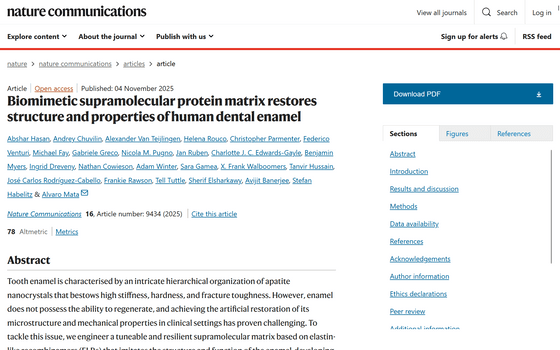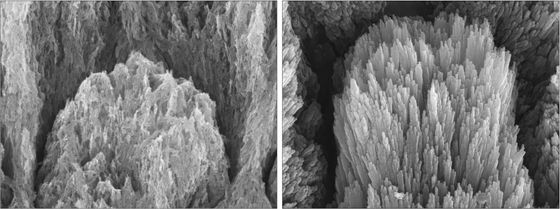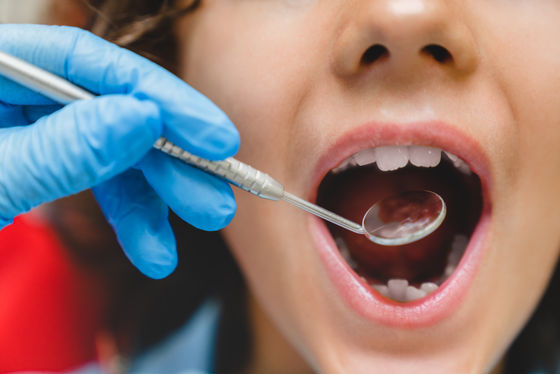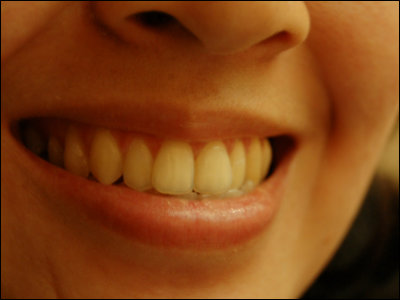A new gel has been developed that coats teeth and repairs and grows enamel

A gel has been developed that can be applied to teeth to promote the growth of tooth enamel and help prevent future cavities and other dental treatments.
Biomimetic supramolecular protein matrix restores structure and properties of human dental enamel | Nature Communications

News - New gel restores dental enamel and could revolutionize tooth repair - University of Nottingham
Breakthrough Gel Rebuilds Tooth Enamel and Strengthens Teeth
https://newatlas.com/medical/protein-gel-rebuilds-tooth-enamel/
According to the World Health Organization, an estimated 3.7 billion people worldwide suffer from some form of oral disease, including tooth decay. The primary cause of tooth decay is the deterioration of tooth enamel, which does not naturally regenerate and is permanently lost. At the time of writing, there is no effective solution for regrowing enamel, and current treatments, such as fluoride and remineralization therapy, only alleviate the symptoms of lost enamel.
Scientists at the University of Nottingham have developed a gel that not only strengthens existing enamel but also rebuilds it.
'This gel mimics the characteristics of natural proteins that guide enamel development in infant teeth. When applied to teeth, it penetrates the interior, forming a thin, strong layer that fills in pits and cracks. It then absorbs calcium and phosphate ions from saliva, acting as a scaffold to promote mineral growth in a process called epitaxial mineralization. This allows the minerals to organize and integrate into the gel, forming natural, healthy enamel.'
The image on the left shows a tooth that has lost calcium and phosphate from the enamel, a condition known as 'demineralization.' The image on the right shows the tooth on the left two weeks after the gel was applied, showing that the enamel had regenerated.

The gel can be applied quickly in the same way as standard fluoride treatments. Furthermore, it can be applied to dentin surfaces exposed by enamel loss, forming an enamel-like layer on the dentin, which has many benefits, including treating tooth sensitivity and improving the adhesion of dental restorations.
The current study is still in the experimental stage and involved extracted molars, so it is not yet clear how effective it will be on real teeth. Furthermore, the gel layer is only a few micrometers thick, thinner than natural enamel, so its long-term durability is unclear.

'Tooth enamel has a unique structure and amazing properties that protect teeth from physical, chemical, and thermal stimuli throughout our lives,' said lead author Abshar Hasan, a researcher. 'When the material we developed in this study is applied to demineralized or eroded enamel or exposed dentin, the crystals grow in an integrated and organized manner, restoring the structure of natural, healthy enamel.'
Professor Alvaro Mata, who led the research, said, 'This technology was designed with clinicians and patients in mind, and we are very excited about the results. It is safe, easy and fast to apply, and scalable. Furthermore, the technology is highly versatile and can be applied to a variety of products to help patients of all ages who suffer from various dental issues associated with enamel loss and dentin exposure. We have begun the research process together with the start-up company Mintech-Bio, and aim to have the first products available as early as 2026. We believe that this innovative technology will soon help patients around the world.'
Related Posts:
in Science, Posted by log1p_kr







